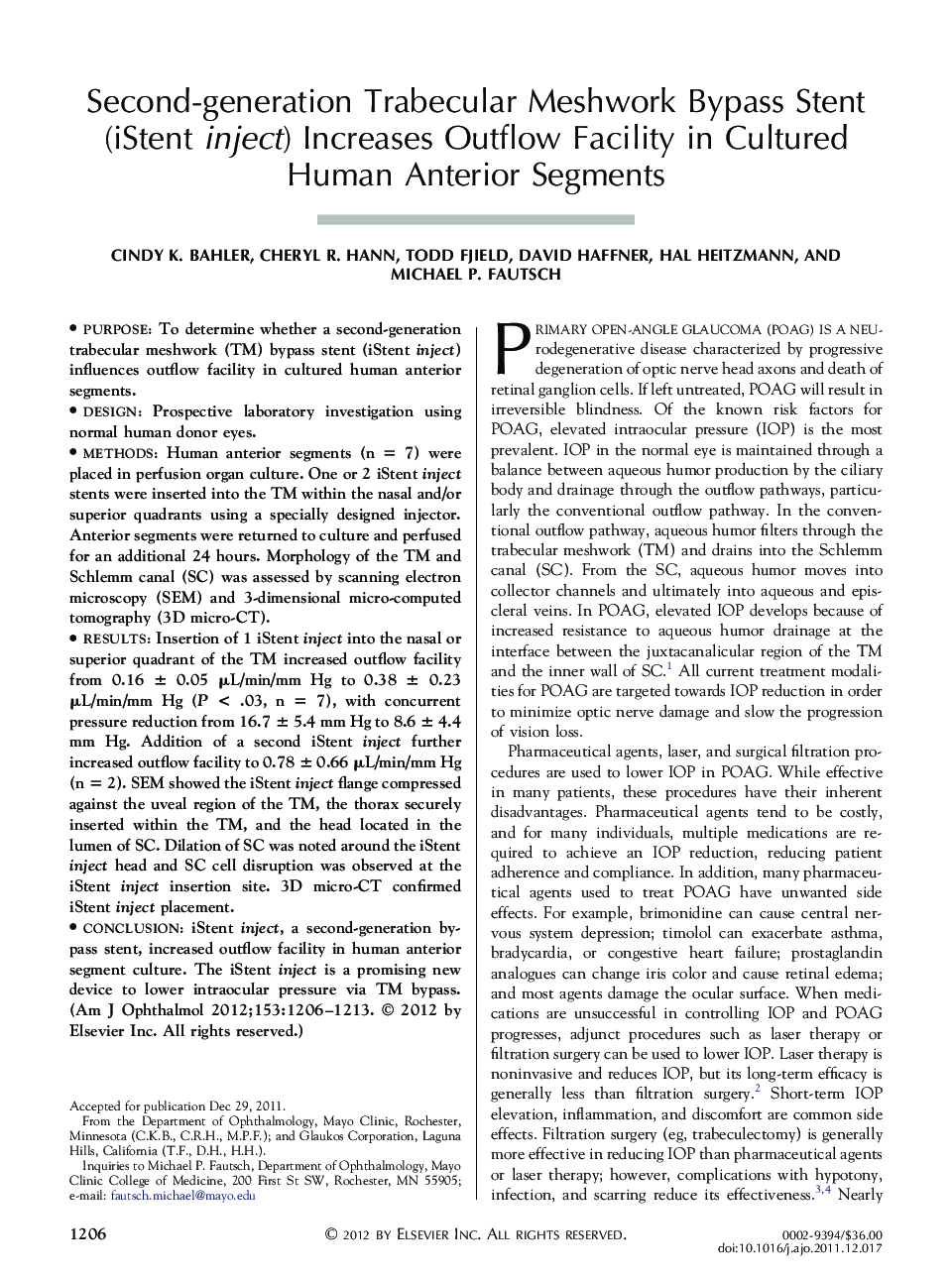| Article ID | Journal | Published Year | Pages | File Type |
|---|---|---|---|---|
| 4003332 | American Journal of Ophthalmology | 2012 | 8 Pages |
PurposeTo determine whether a second-generation trabecular meshwork (TM) bypass stent (iStent inject) influences outflow facility in cultured human anterior segments.DesignProspective laboratory investigation using normal human donor eyes.MethodsHuman anterior segments (n = 7) were placed in perfusion organ culture. One or 2 iStent inject stents were inserted into the TM within the nasal and/or superior quadrants using a specially designed injector. Anterior segments were returned to culture and perfused for an additional 24 hours. Morphology of the TM and Schlemm canal (SC) was assessed by scanning electron microscopy (SEM) and 3-dimensional micro-computed tomography (3D micro-CT).ResultsInsertion of 1 iStent inject into the nasal or superior quadrant of the TM increased outflow facility from 0.16 ± 0.05 μL/min/mm Hg to 0.38 ± 0.23 μL/min/mm Hg (P < .03, n = 7), with concurrent pressure reduction from 16.7 ± 5.4 mm Hg to 8.6 ± 4.4 mm Hg. Addition of a second iStent inject further increased outflow facility to 0.78 ± 0.66 μL/min/mm Hg (n = 2). SEM showed the iStent inject flange compressed against the uveal region of the TM, the thorax securely inserted within the TM, and the head located in the lumen of SC. Dilation of SC was noted around the iStent inject head and SC cell disruption was observed at the iStent inject insertion site. 3D micro-CT confirmed iStent inject placement.ConclusioniStent inject, a second-generation bypass stent, increased outflow facility in human anterior segment culture. The iStent inject is a promising new device to lower intraocular pressure via TM bypass.
